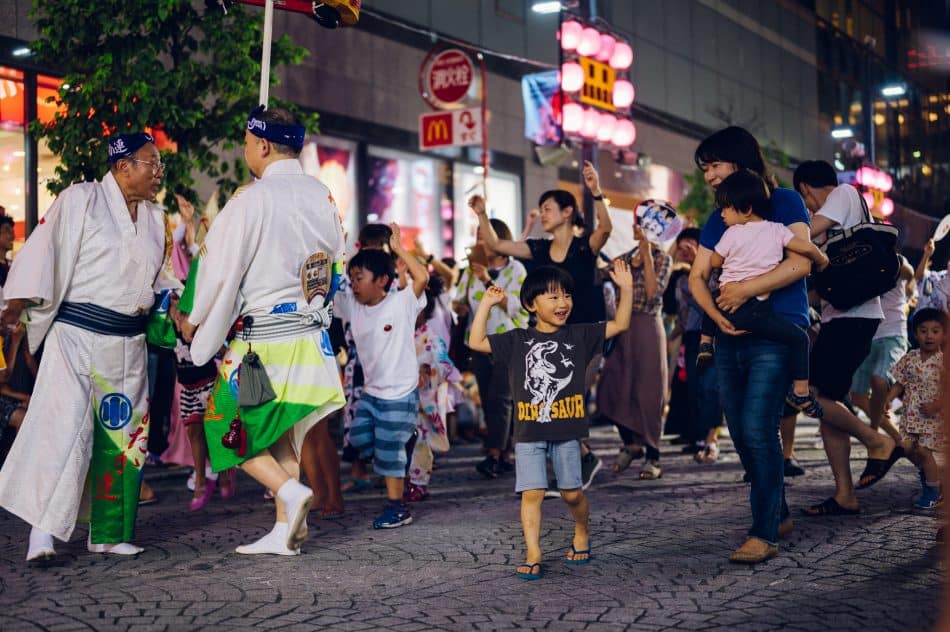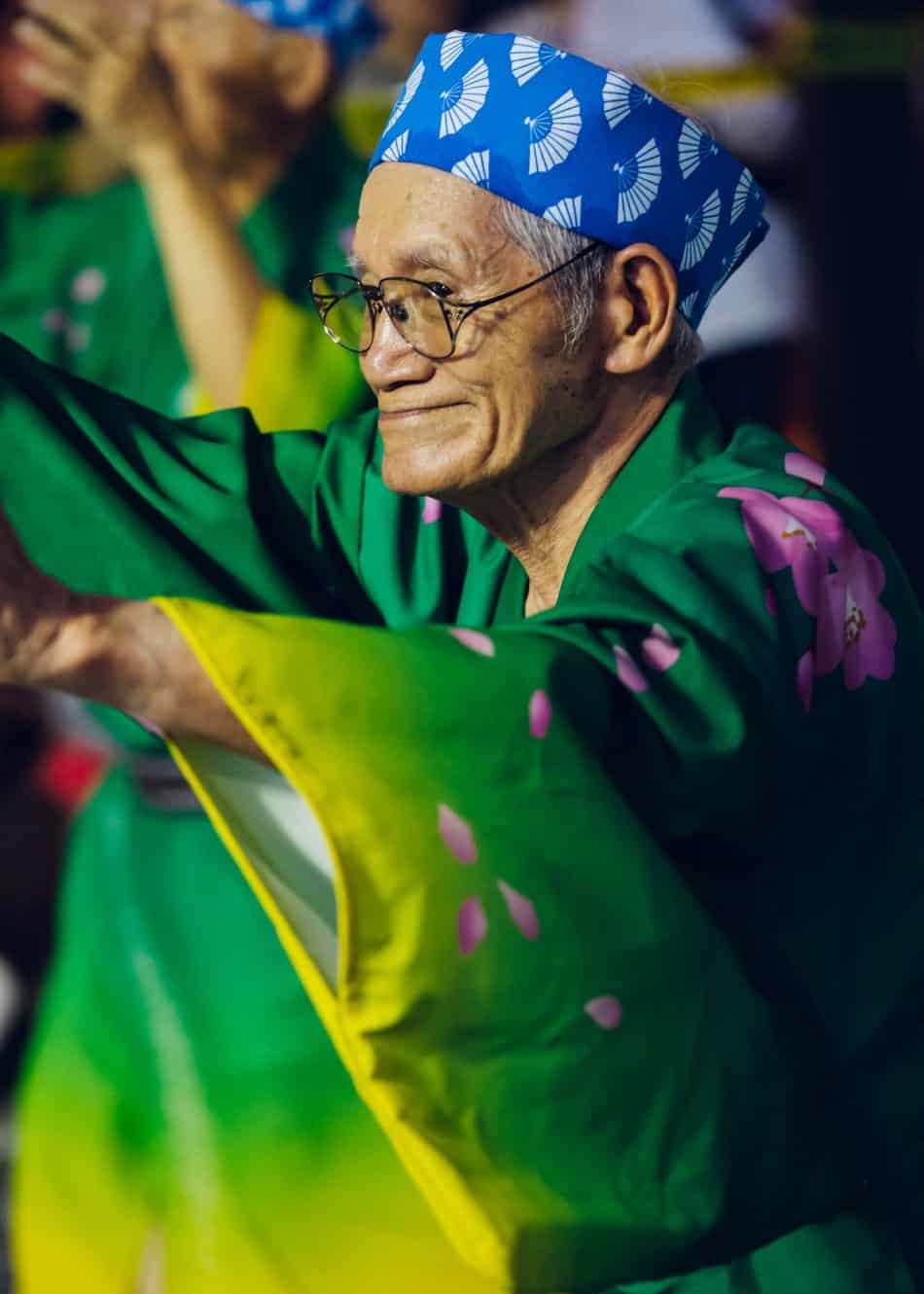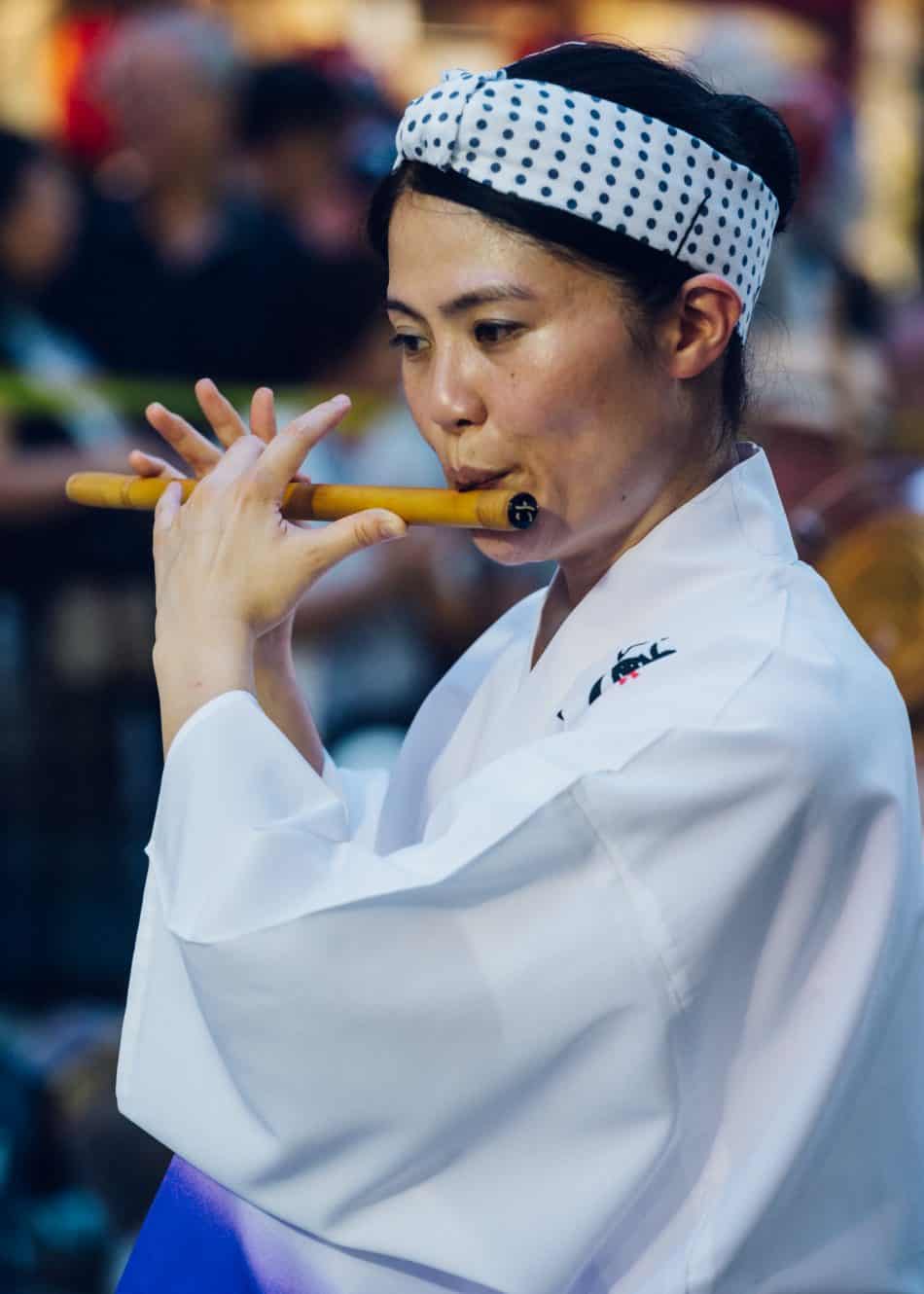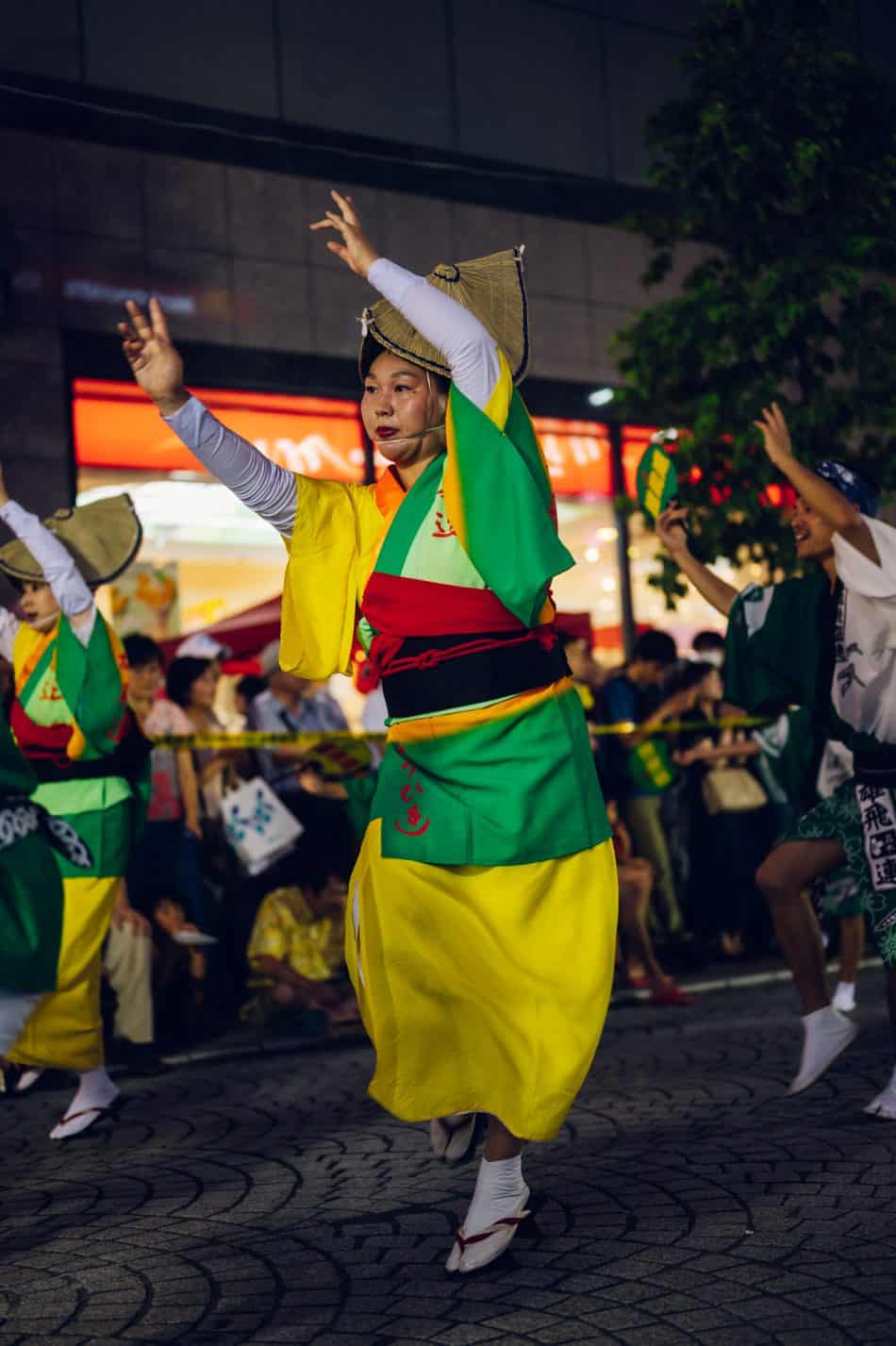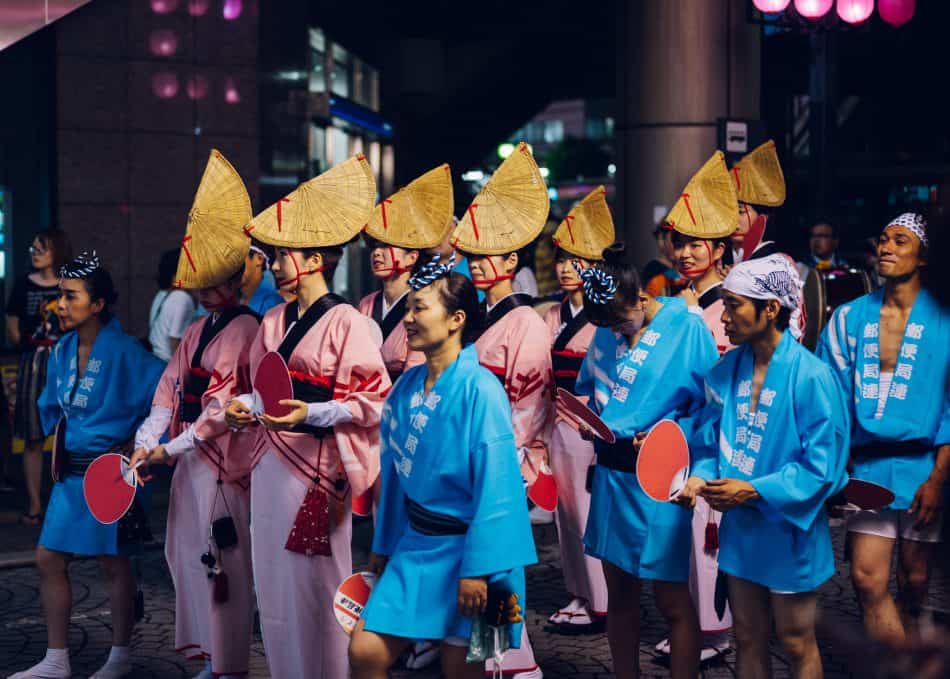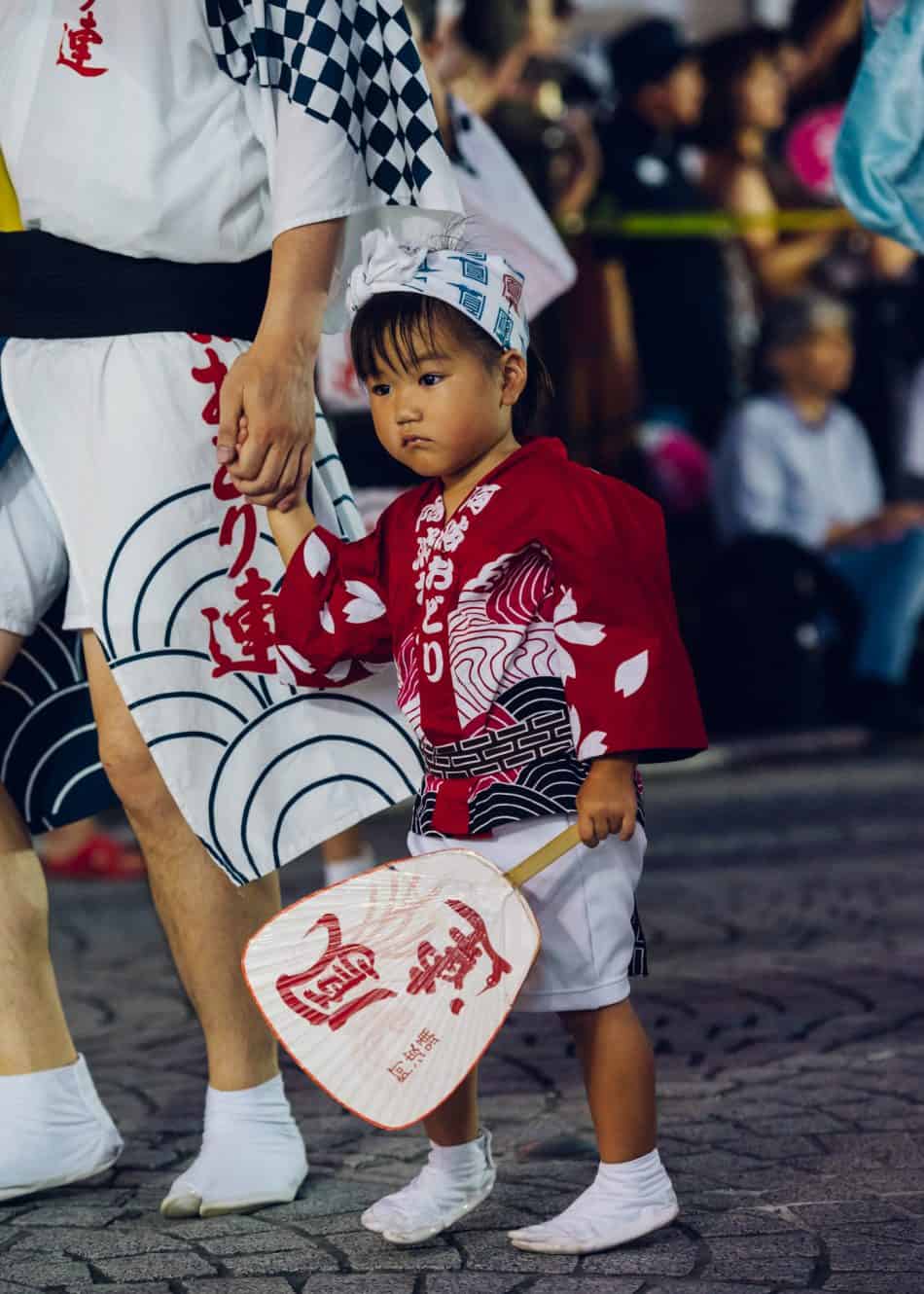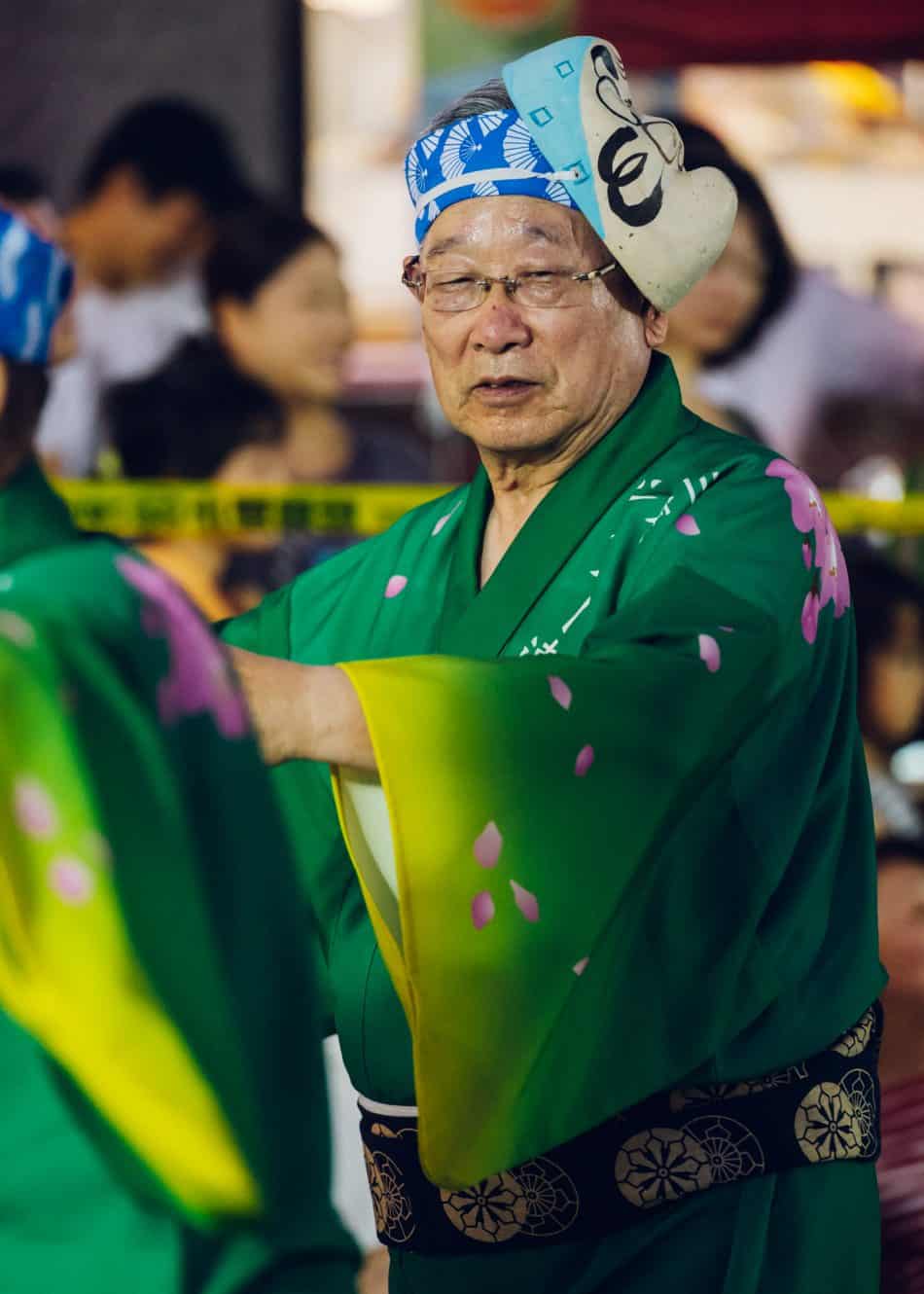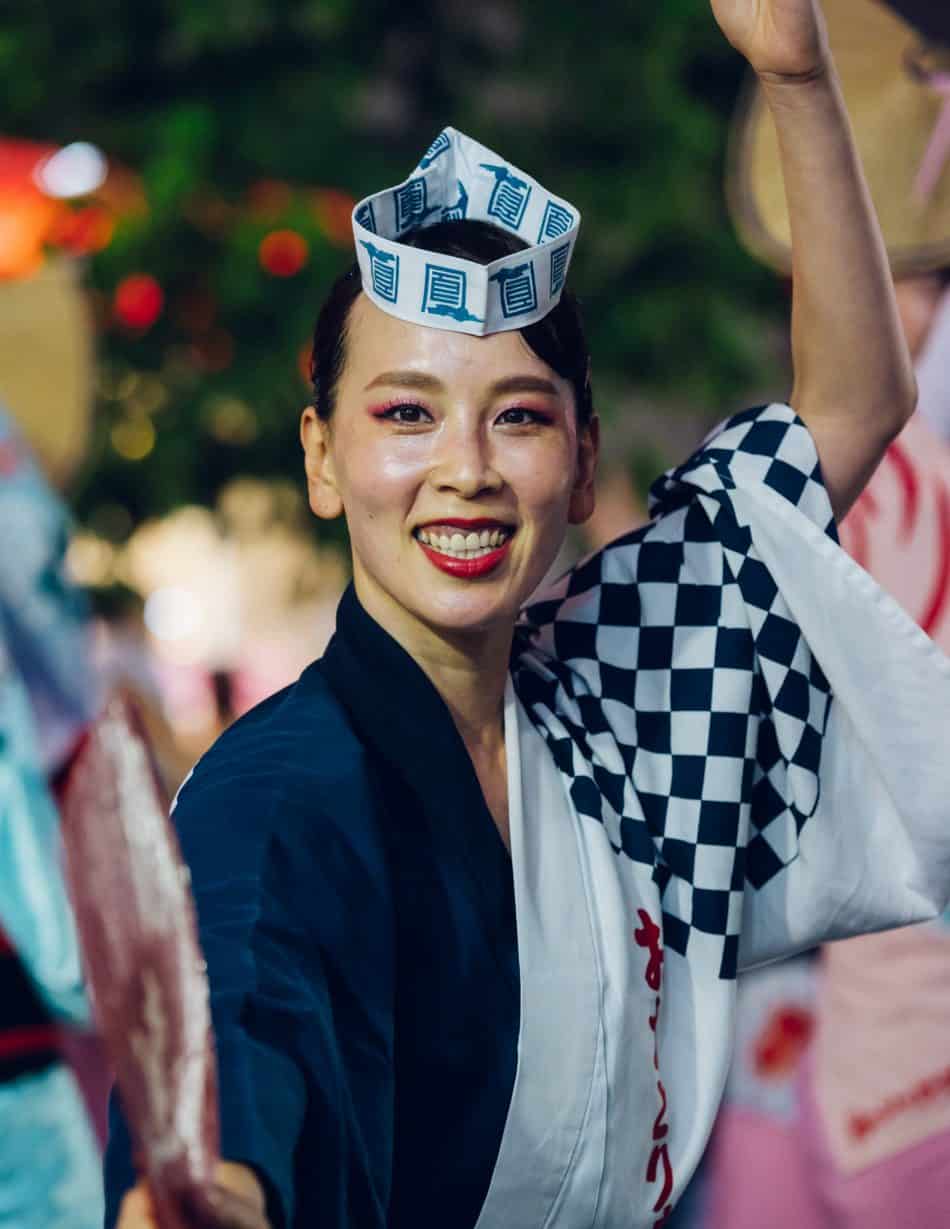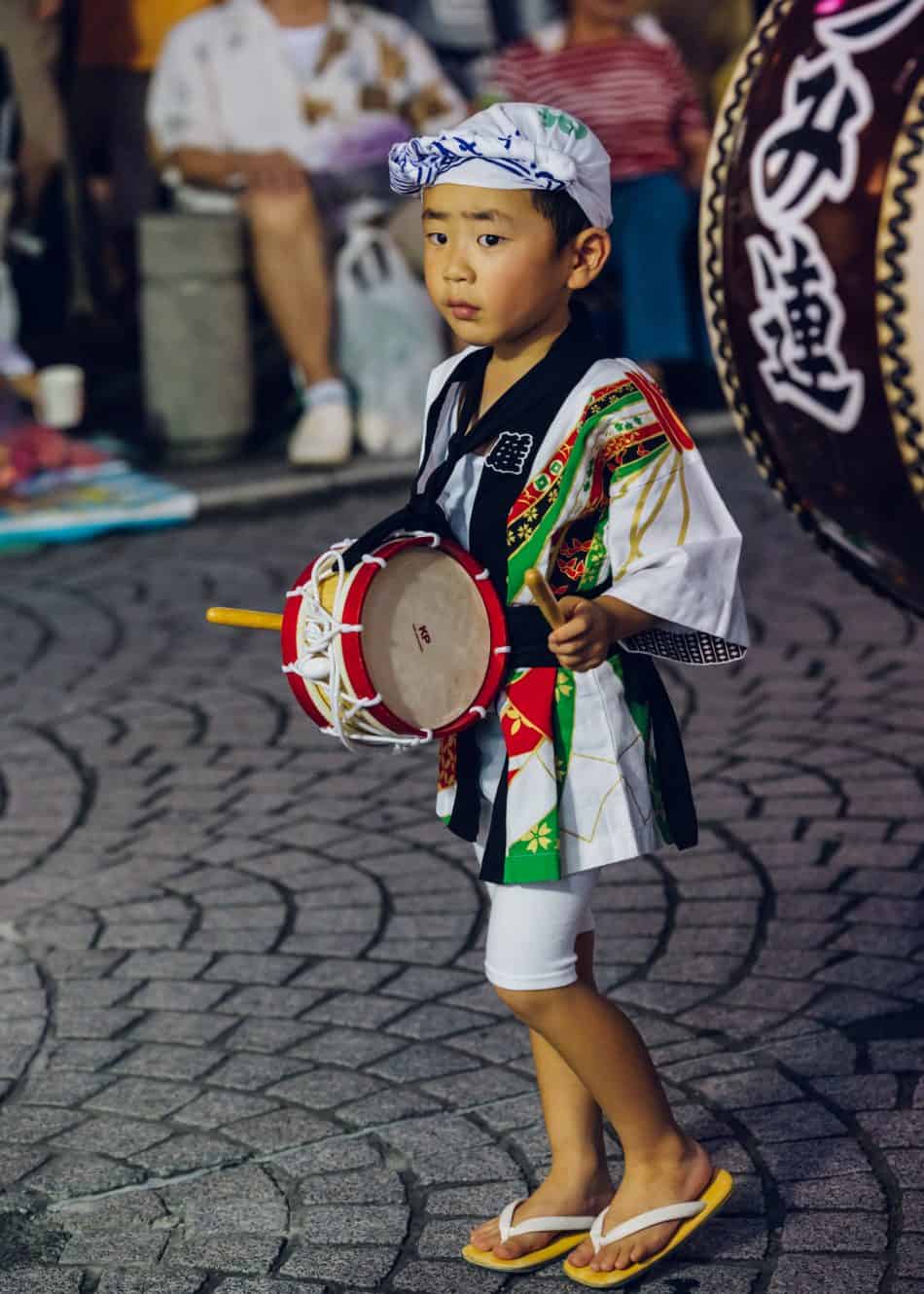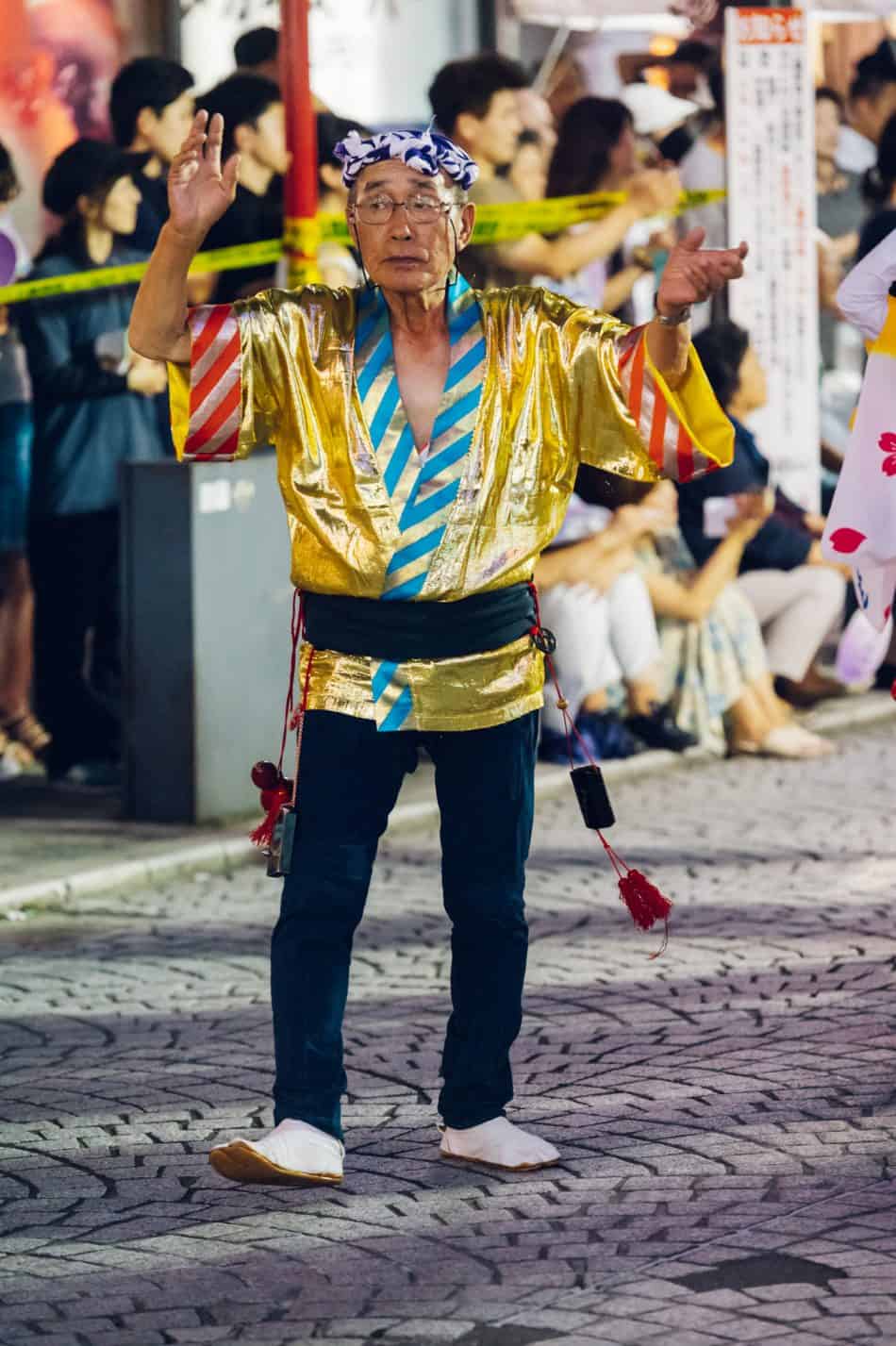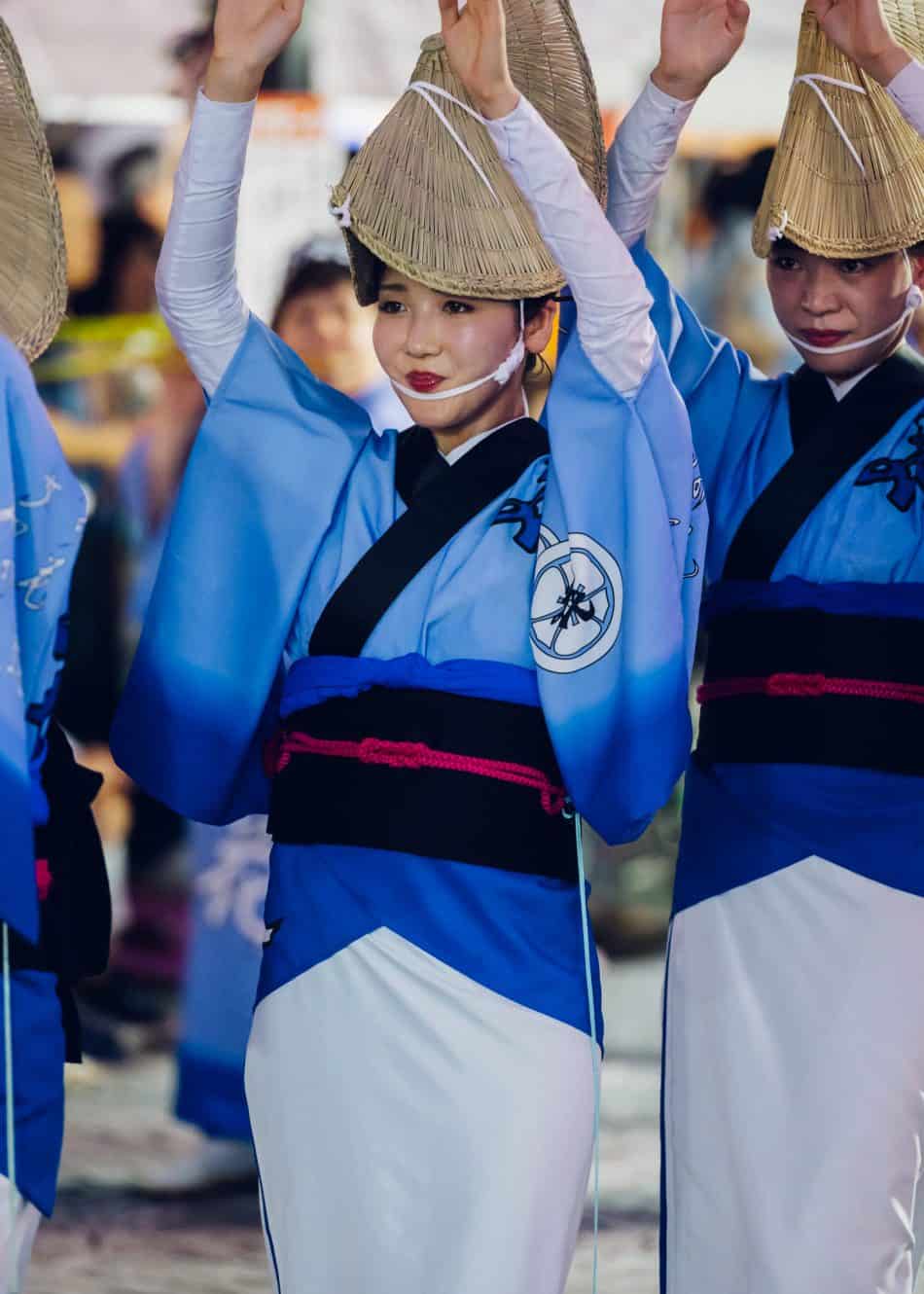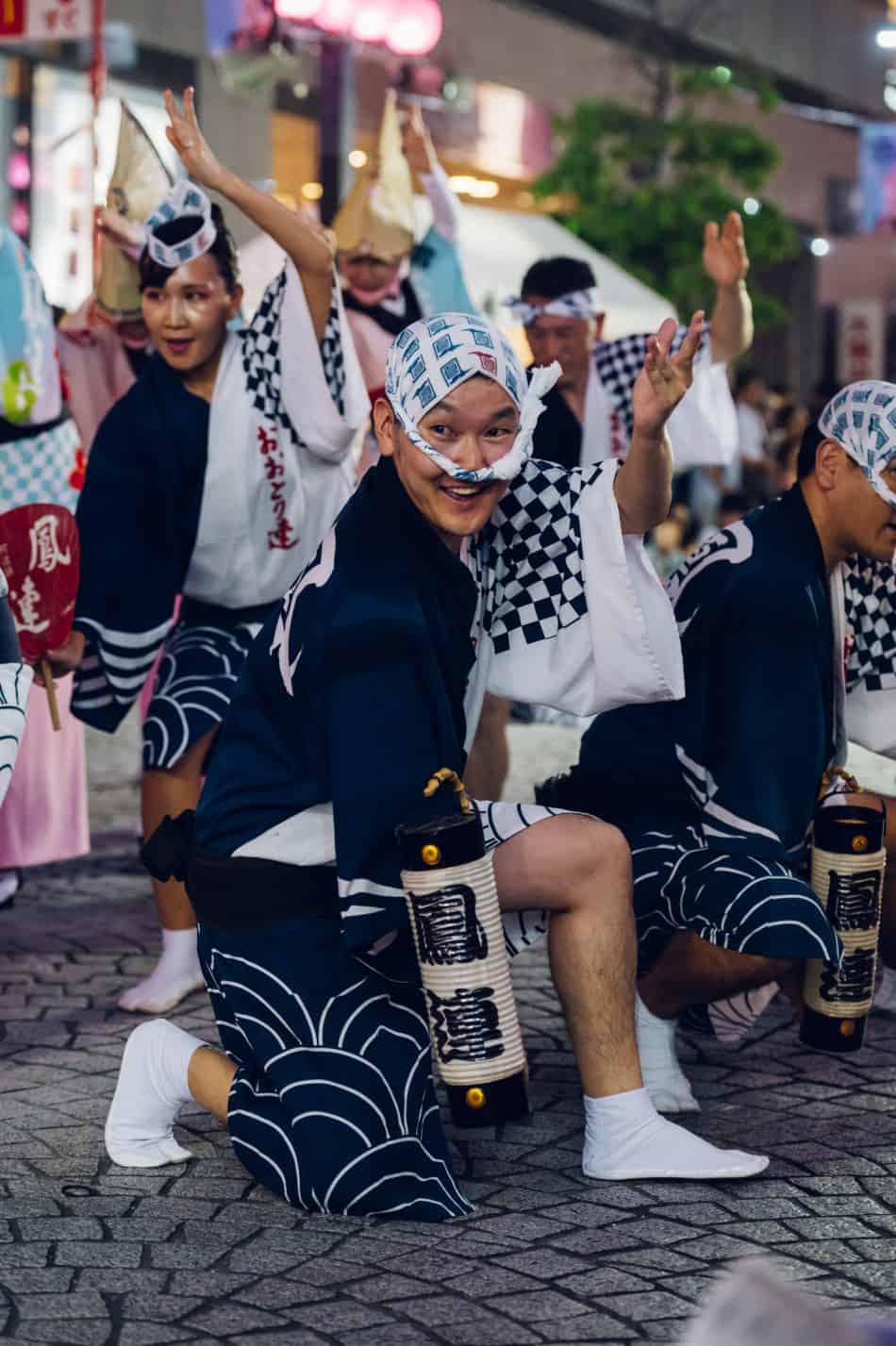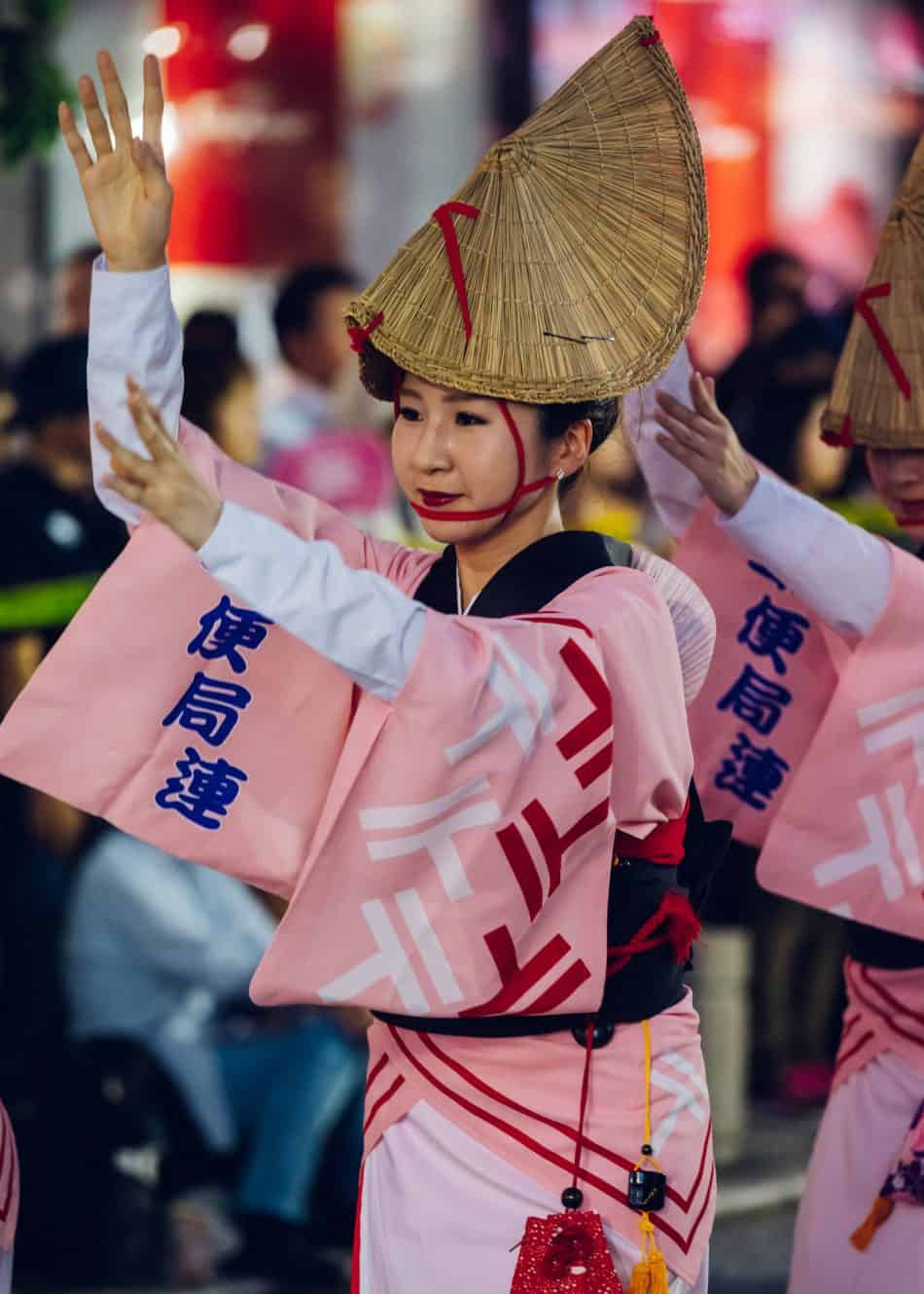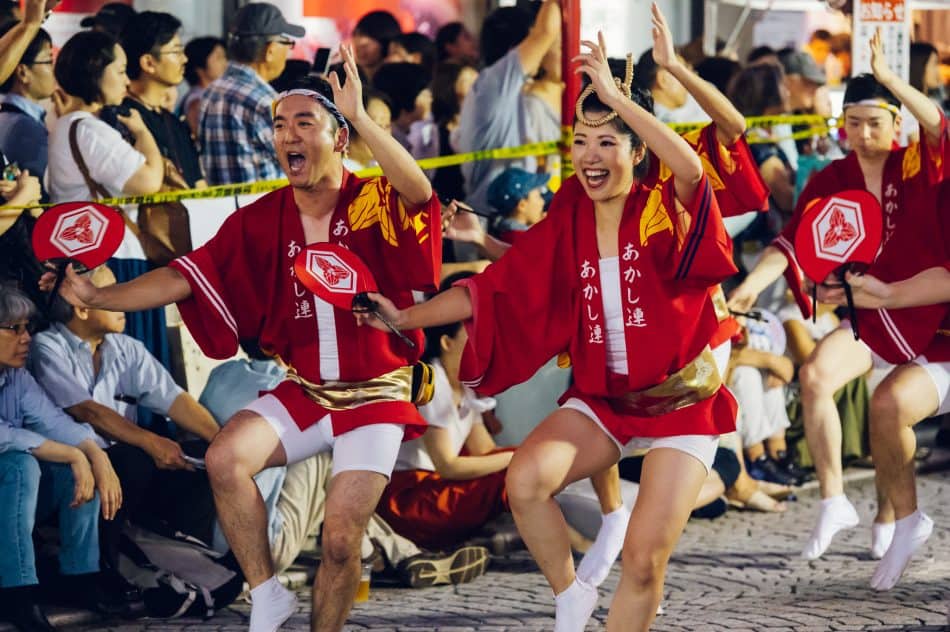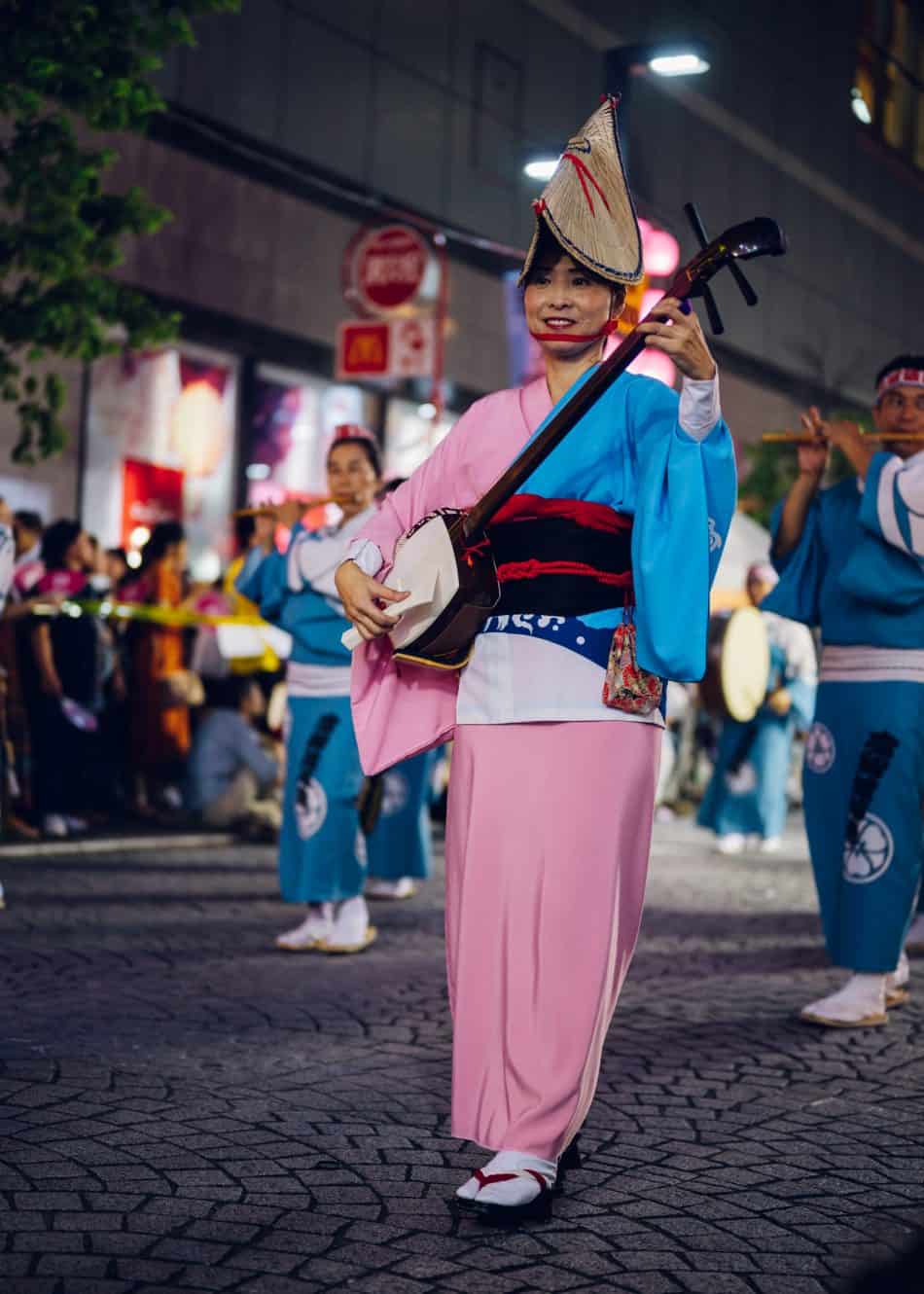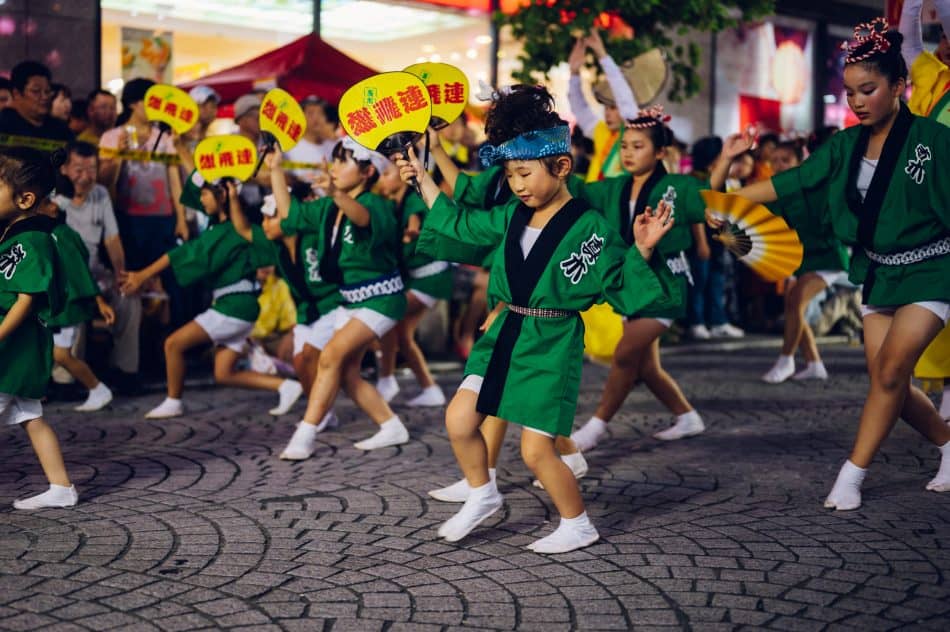
It is said that Awa Odori began as a 16th century dance party with large quantities of adult beverages. To anyone who has witnessed the modern celebration of this rambunctious dance festival, this fact is completely unsurprising. Awa Odori is pure glee for participants and spectators alike and has grown to become one of Japan’s favorite forms of summer weekend entertainment.
We owe a debt of gratitude to Lord Hachisuka Iemasa, the daimyo of what is now Tokushima Prefecture. Upon the completion of his castle, his first decree was “Everybody Wang Chung tonite!” inviting perhaps his whole domain to Opening Night at the Castle. This three day event apparently had a generous open bar and the grateful peasantry took full advantage, consuming large amounts of alcohol and stumbling about in drunken stupors. A simple tune was quickly created for the party, the lyrics to which suggesting perhaps its writer had hit the sake keg one too many times.
The dancers are fools
The spectators are fools
Both are fools
So why not dance?
~The generic Awa Odori song
Those who subscribe to the stereotype of Japanese as a reserved and gentle folk need only squeeze into the sweaty crowd at one of these popular summer festivals to have their eyes opened for the better. Awa Odori is a dance party, a moveable mosh pit that is safe enough for even the smallest family members to attend, alluring enough to get even a stoic Japanese ojisan literally dancing in the streets.
Yet, there is a dichotomy even among the dancers of Awa Odori. Awa Odori is a dance both genders can participate in, but if you are a man, you are generally restricted to dancing the part of the fool. These dancers flail and beckon, interacting with the crowds, teasing the spectators who refuse to let down their omote facades. Women can dance in this role equally, though most dance more elegantly than the brutish dance of the men. But only women can don the torioigasa (literally “bird scaring hat”), kimono, and geta, the latter tilted forward and worn like a stiletto heel. The dance of these women, though using the same basic pattern as the fools, is more refined and graceful, their arms slightly bent and reaching heavenward, kimono sleeves swaying like angel’s wings, and the torioigasa slightly hiding their faces, giving them a enchanting air of mystery.
The largest festival in Japan takes place every August over three days in the birthplace of Awa Odori, Tokushima Prefecture, just like it has for over 400 years since that fateful celebration at the castle. Tokyo’s Koenji neighborhood in western Tokyo boasts the second largest festival, the first Awa Odori event held outside of Tokushima, a relative baby born in 1956. However, Awa Odori festivals are commonplace in many cities all over Japan and many neighborhoods of Tokyo, mainly in the months of July and August.
If on the dance scale, Bon Odori is a waltz, perhaps Awa Odori would be regarded as the Macarena (and Yosakoi, another popular Japanese dance might be EDM). It is simple enough for even the most left-footed dancer to learn and once you learn it, you can insert yourself in almost any Awa Odori festival across Japan without looking like a fool (unless of course that is your intention). Awa Odori is ever evolving, however, and some troupes , known as ren, are choreographing more complex and entertaining dances to stand out on the festival circuits.
Even if you are not a dancer, standing along a steamy, crowded street with Awa Odori dancers lurching past you, faces glowing with sweat and smiles, the beat of a dozen taiko drums reverberating in your chest, your body will begin to move. The euphoria of the dance will have you in its grip, and you will find yourself clapping along, shouting encouragements of “Yatto yatto!“, and feeling a part of something bigger. Which you are, because when you attend an event like Awa Odori in Japan, you are not just a spectator. You are a part of the community.
